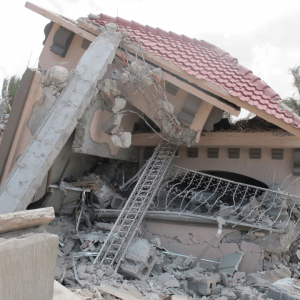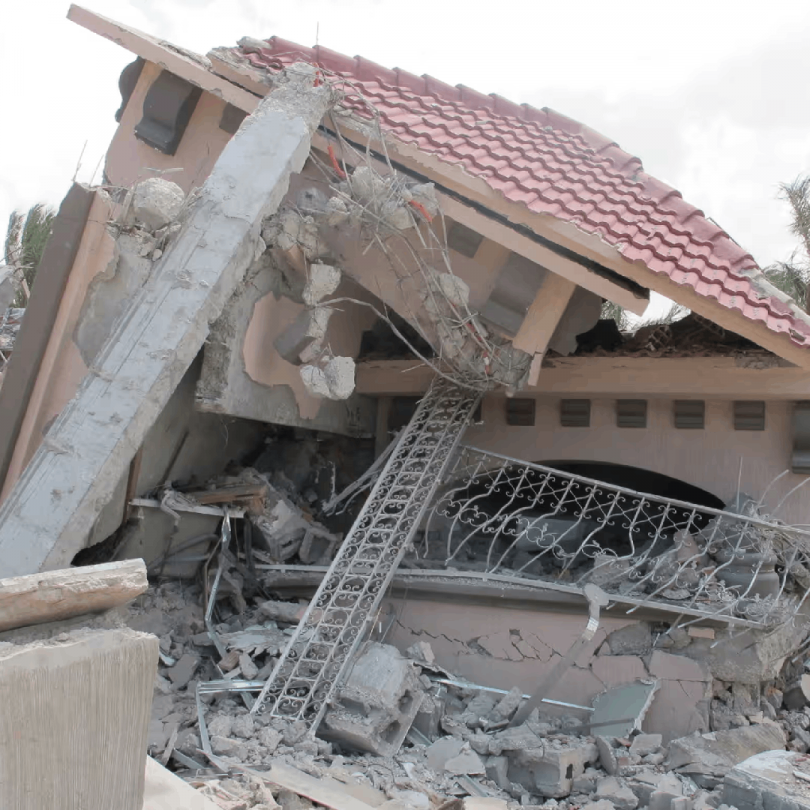
Denmark’s defence ministry said it would launch a review after evidence emerged showing its air force participated in airstrikes on Libya that killed 14 civilians in 2011, the first time any of the 10 countries involved in the Nato bombing campaign has acknowledged a possible link to non-combatant casualties.
Documents released under freedom of information show the Danish air force had concluded privately as long ago as 2012 that two F-16 attacks were connected to civilian casualty reports compiled by the UN, media and human rights groups.
However, this acknowledgment was not made public at the time, effectively preventing a relative of the Libyans killed from seeking compensation or redress, because he did not know which country may have been behind the bombing.
Nato attacks involving Danish fighter jets in which non-combatants were killed include:
-
An airstrike on Surman, nearly 40 miles west of Tripoli, on 20 June 2011 that killed 12 civilians, including five children and six members of one family. A surviving family member said the target was solely a residential compound, owned by a retired Libyan government member, but Nato said at the time it was “a legitimate military target”, despite reports of non-combatant deaths.
-
The bombing of an apartment block in Sirte, central Libya, on 16 September 2011 that killed two, a man and a woman who was five months pregnant. Although there were unconfirmed reports of snipers on the rooftop, questions were raised in the aftermath over whether an attack would have been proportionate, given civilians were killed.
The Danish defence ministry said in a statement that while the events took place many years ago, it had begun a review. “The Minister of Defence has requested the Defence Command to assess whether the documents in question indicate that there were ramifications of such magnitude that an investigation should have been conducted at that time within the coalition or Nato framework,” it added.
One newly released document, written in English and sent in May 2012 from Danish military command to the country’s Nato representatives, said “Danish aircraft participated in a number of the specific attacks” listed as having caused civilian casualties by investigators from the UN international commission of inquiry on Libya, Human Rights Watch and the New York Times.
“Civilian casualties during the conduct of these attacks cannot be ruled out,” the Danish internal review, previously marked secret, concluded.
However, the review also argued there was “no evidence or indication that Danish aircraft have caused such casualties”, because “there were no Nato troops on the ground to estimate the effects of attacks”. Instead, Denmark relied on remote pilot observations and other reconnaissance to reach an ambiguous verdict.
Further air force documents, in Danish, confirm the country’s F-16s participated in the airstrikes on Surman and Sirte on the basis of the dates of each. In each case, a second country was involved, but its name remains redacted, meaning it remains possible another country’s military delivered the deadly bombs.
The Danish admission of a link with the airstrikes follows a joint investigation between Altinget, a Danish news site, the civilian harm watchdog Airwars, and the Guardian.
One expert said the Danish military’s failure to acknowledge the possibility of causing civilian casualties at the time was a missed opportunity to improve standards of accountability – and to allow victims to seek compensation.
Marc Garlasco, an adviser to the UN-established international commission of inquiry on Libya, which investigated human rights violations by all parties in the conflict, said he found the disclosures in the documents “quite galling” because Nato had refused to answer questions about civilian casualties at the time.
“It is greatly disappointing that there wasn’t enough transparency that they put this out at a time back when it could be useful. Useful not only for lessons learned so that lives could be saved in the future but also useful for the victims of these strikes – that they could have an understanding of why their family members were killed and could potentially receive some kind of compensation for their loss,” he said.
Aerial bombardment is at the heart of modern warfare, used repeatedly by the west against Islamic State in Syria and Iraq, by Russia in Syria and Ukraine and most intensively by Israel in Gaza. However, militaries, including those in the west, have often been reluctant to admit when civilians were killed and wounded.
The UK says only one civilian was killed during a nine-year campaign of bombing IS targets in Iraq and Syria in which 4,324 missiles or other weapons were launched, a near perfect record that experts have questioned.
Responding to the Danish disclosure, a Nato official said the Libyan campaign was conducted with “unprecedented precision” and that “exceptional care was taken to minimise risks to civilians”.
Although the official conceded the risks “can never be zero”, they insisted that all locations bombed during the operation were “legitimate military targets”. Nato had no first-hand evidence of civilian casualties, because alliance soldiers were not allowed to inspect casualty sites.
“There was no invitation from the Libyan authorities for Nato to send personnel into the country to review strikes,” the Nato official said.
Ten nations, including six from Europe, participated in the bombing missions as part of Nato-led Operation Unified Protector, the codename for the western intervention in Libya, which ran for six months from 31 March 2011.
It helped lead to the overthrow of the dictator Col Muammar Gaddafi but also ushered in a long period of instability in the north African country, which remains divided between east and west after a period of civil war.
As well as Denmark, countries involved in bombing targets in Libya included the US, UK, France, Belgium, Canada, Italy, Norway, which are all Nato members, plus Qatar and the United Arab Emirates. A Dane, Anders Fogh Rasmussen, headed Nato at the time.
Other Nato airstrikes, not involving Denmark, have been linked to civilian fatalities, including a bombing in Majer on 8 August 2011, where a UN investigation concluded that an initial bombing killed 16 civilians – and then after rescuers had arrived, a follow-up attack killed a further 18.
Until now no country has accepted a link between their air force and a particular bombing, shielding their activities under the umbrella of Nato. As a result it has not been possible for family members of victims to seek redress in that country’s courts.
One man, Khaled al-Hamedi, whose wife and two children were killed in the strike at Surman, tried to bring a claim against Nato, but it failed when the Belgian court of appeal concluded in 2017 the military alliance had immunity from prosecution.
The strike targeted a large family compound belonging to Hamedi’s father, a senior figure in Gadaffi’s regime with links to the Libyan leader’s family. The younger Hamedi described the site as residential, while Nato said it was a command and control node.
Having been shown the documents, he said he would discuss with his lawyer about bringing a claim against the Danish military. “I want them first to declare their mistake to us,” he said, and that as well as seeking compensation he wanted Denmark, or whoever was responsible, “to say sorry as well”.
Denmark, in common with other western nations, had a policy in which a military officer, known as a “red card holder”, could refuse to let that country’s air force fly on a mission if, as stated in one of the Danish documents, it was “suspected that it would cause civilian casualties”. Pilots were supposed to abort missions if they suspected attacks would cause civilian casualties.
Tessa Gregory, a partner at the British public law firm Leigh Day, said if militaries were not prepared to examine reports of civilian casualties and acknowledge mistakes, they risked giving the impression they were above the law.






